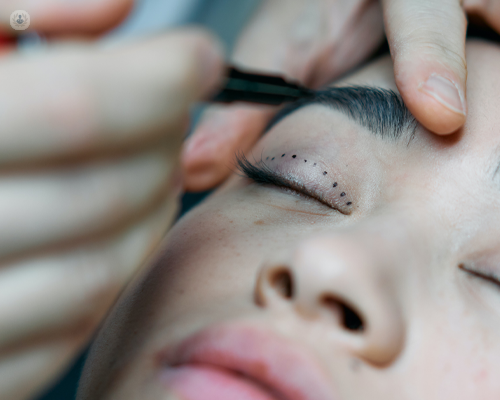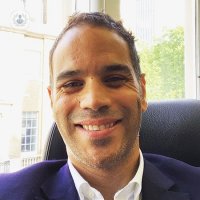Blepharoplasty: Frequently-asked questions
Written by:Esteemed consultant plastic, reconstructive and cosmetic surgeon Mr Ahid Abood details how a blepharoplasty procedure is performed, and who the ideal candidate for the surgery is.

Is there an age limit for blepharoplasty? Who is a suitable candidate?
There's no age limit for a blepharoplasty. Younger and older people are both suitable for this type of surgery. Usually in circumstances where they have a significant amount of excess skin, and most frequently that's affecting the upper eyelids. However, lower eyelid blepharoplasty is also a frequently performed procedure and that's a slightly more complex procedure that involves, to some degree, excess skin in the majority of cases, but also consideration of the underlying structure in particular, the fat pads and how they can be improved upon to enhance the overall appearance of the eyes.
How is a blepharoplasty performed? Where is the incision made?
With regards to upper eyelid blepharoplasty, this is usually performed in my practice under local anaesthetic only or local anaesthetic with sedation. The scar for this rest within the natural crease of the upper eyelid and that's usually approximately five millimetres or so above the eyelashes, but that will vary from person to person to some degree.
With regards to lower eyelid blepharoplasty under general anaesthetic as it's more comfortable for patients that way. The incision for that will either be inside of the lower eyelid or on the outside of the eyelid, just beneath the lash line, depending on what it is that needs to be addressed during the surgery.
Can a blepharoplasty be combined with other procedures?
Yes, blepharoplasty can be combined with other procedures. It's carried out in conjunction with browlift surgery in order to provide a more holistic approach to rejuvenating the upper face.
It can be combined with pretty much any other cosmetic procedure.
How much fat can be removed in a blepharoplasty?
The question of how the fat is managed in a blepharoplasty depends upon how much fat there is that protrudes. Sometimes patients will add significant fat pads which will need to be reduced. They are seldom completely removed, which can lead to a very hollow-looking appearance. Or in the case where the fat pads aren't particularly large but they just herniate forward, it might just be a question of rearranging the fat pads or tightening the area without any formal removal of fat as such.
What results can patients expect after a blepharoplasty? Will the shape of the eye change?
Most patients should expect the removal of excess skin and a rejuvenating, more youthful appearance to the eyes. Generally speaking, the shape of the eyes isn't altered during blepharoplasty surgery. In certain cases, in certain types of blepharoplasties - what's termed as ethnic blepharoplasty, the shape of the eye can be purposefully changed.
In vast majority of cases, it's simply a rejuvenating procedure and the shape of the eye isn't altered.
When are final results fully visible?
Most patients will see a significant change in the eye appearance immediately following surgery, but for the final results to be achieved all of the swelling will need to resolve and this can take six to eight weeks or more.
If you are interested in booking a consultation with Mr Abood, you can do so via his Top Doctors profile.


